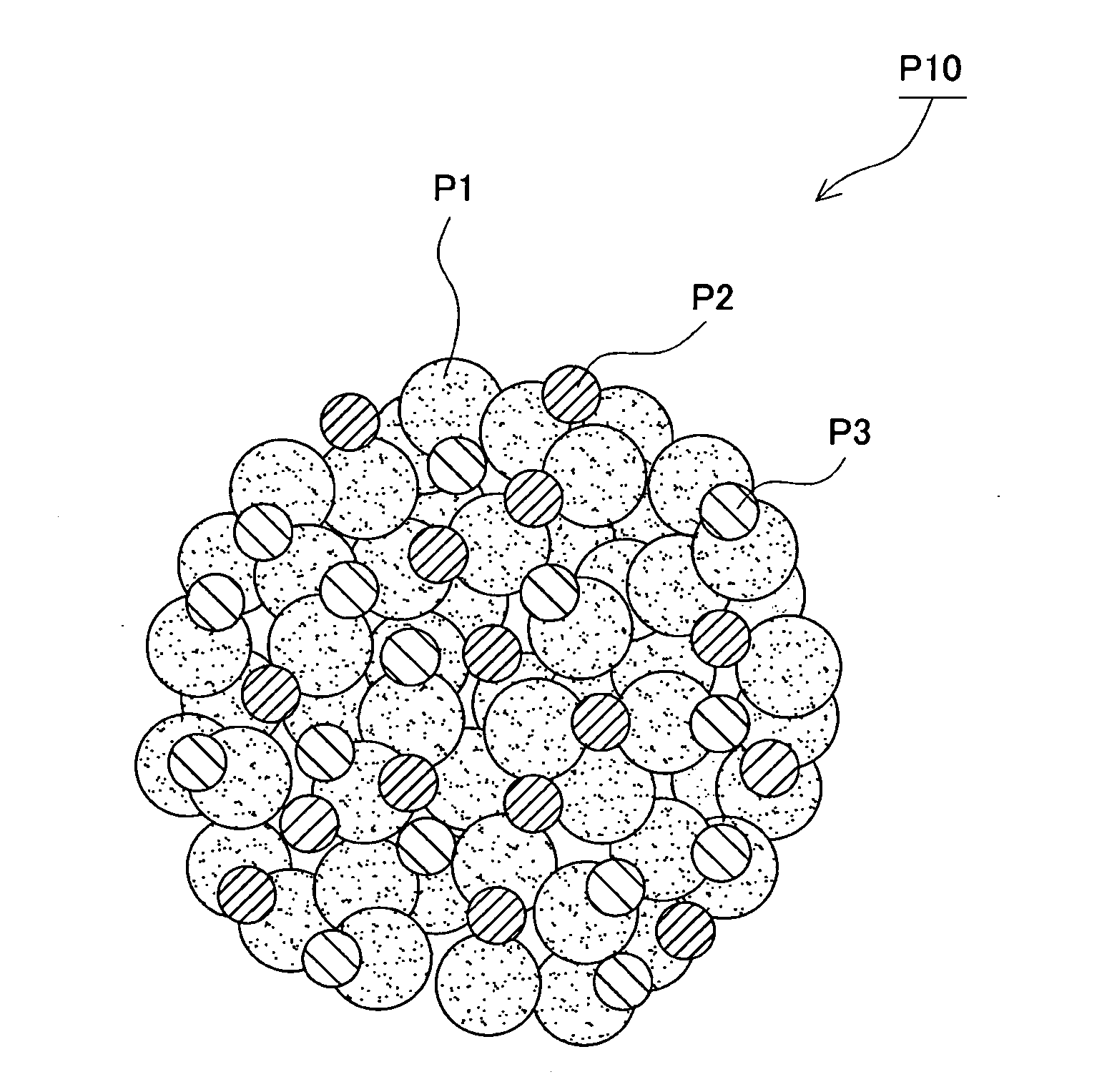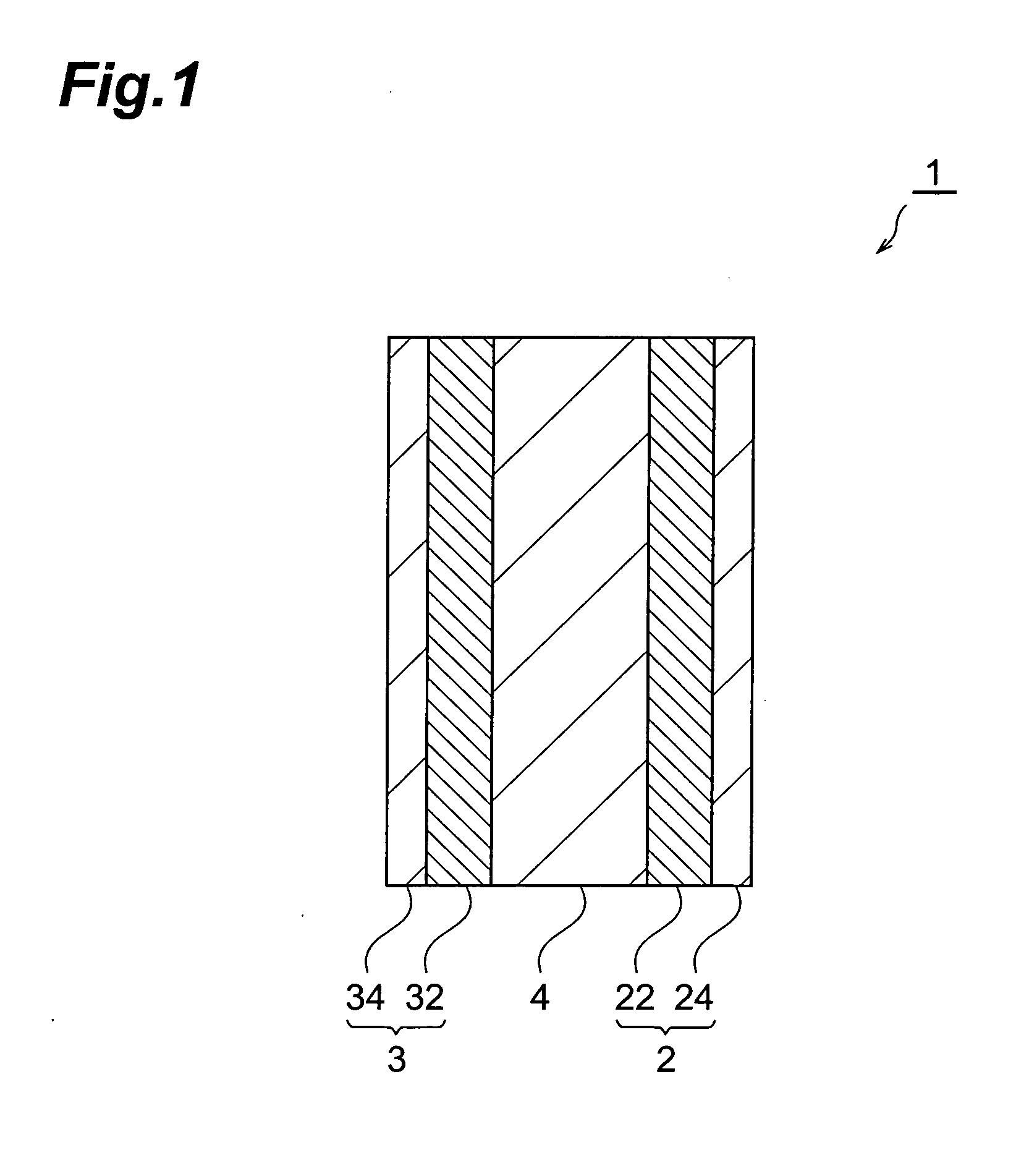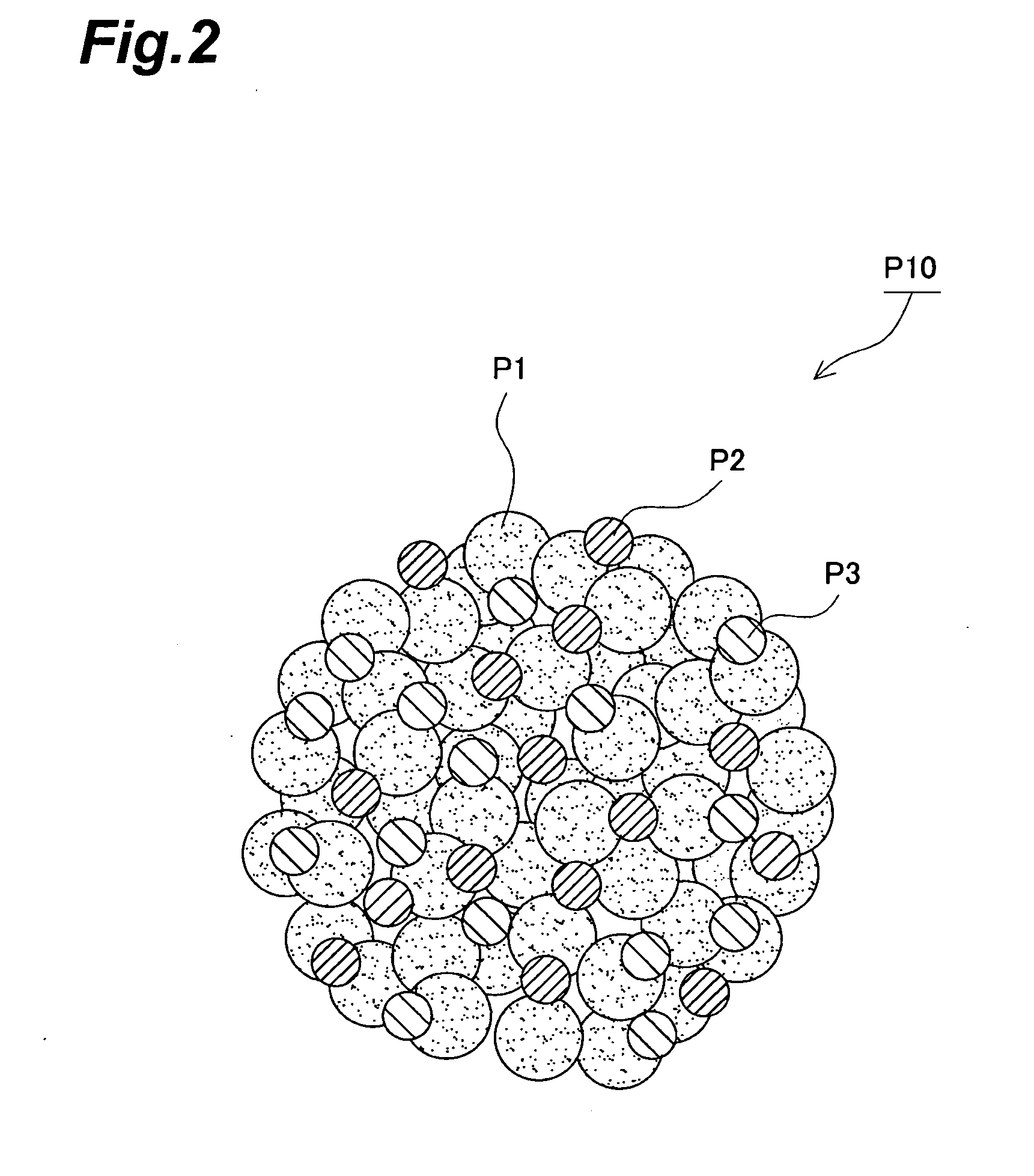Composite particle for electrode and method for producing same, electrode and method for producing same, and electrochemical device and method for producing same
a technology of composite particles and electrodes, applied in the field of composite particles for electrodes, can solve the problems of difficult formation of cells, short content of active materials, and limit to increase the power density of cells, and achieve the effects of preventing the resistance and charge transfer overvoltage of the active material-containing layer from largely reducing, superior electron conductivity, and reducing the resistance and charge transfer overvoltag
- Summary
- Abstract
- Description
- Claims
- Application Information
AI Technical Summary
Benefits of technology
Problems solved by technology
Method used
Image
Examples
example 1
[0226] In accordance with the procedure described below, the composite particle for electrode, which can be used for forming the active material-containing layer for the cathode of lithium ion secondary cell, was produced in accordance with the above-described granulating step. The composite particle P10 for electrode was formed of an electrode active material for the cathode (90% by mass), a conductive additive (6% by mass) and a binder (4% by mass).
[0227] As for the electrode active material for the cathode, from the composite metal oxide expressed by a general formula: LixMnyNizCo1-x-yOw, particles of a composite metal oxide (BET specific surface area: 0.55 m2 / g, average particle diameter: 12 μm), which satisfied the conditions of x=1, y=0.33, z=0.33 and w=2, was used. As for the conductive additive, acetylene black was used. Further, as for the binder, polyvinyliden fluoride was used.
[0228] First of all, in the stock solution preparing step, a “stock solution” (acetylene black...
example 2
[0231] In accordance with the procedure described below, the composite particle for electrode, which can be used for forming the active material-containing layer for an anode of lithium ion secondary cell, was produced in accordance with the above-described granulating step. The composite particle P10 for electrode was constituted of an electrode active material for the anode (85% by mass), a conductive additive (5% by mass) and a binder (10% by mass).
[0232] As for the electrode active material for the anode, artificial graphite (BET specific surface area: 1.0 m2 / g, average particle diameter: 30 μm) was used. As for the conductive additive, acetylene black was use. Further, as for the binder, polyvinyliden fluoride was used.
[0233] First of all, in the stock solution preparing step, a “stock solution” (acetylene black of 2% by mass, polyvinyliden fluoride of 4% by mass) was prepared by dispersing acetylene black in the solution in which polyvinyliden fluoride was dissolved in N,N-d...
example 3
[0236] In accordance with the procedure described below, the composite particle for electrode, which can be used for forming the electrode of the electric double layered capacitor, was produced in accordance with the above-described granulating step. The composite particle P10 for electrode was constituted of an electrode active material for the anode (80% by mass), a conductive additive (10% by mass) and a binder (10% by mass).
[0237] As for the electrode active material, activated carbon (BET specific surface area: 2500 m2 / g, average particle diameter: 20 μm) was used. As for the conductive additive, acetylene black was used. Further, as for the binder, polyvinyliden fluoride was used.
[0238] First of all, in the stock solution preparing step, a “stock solution” (acetylene black of 2% by mass, polyvinyliden fluoride of 2% by mass) was prepared by dispersing acetylene black in the solution in which polyvinyliden fluoride was dissolved in N,N-dimethylformamide [(DMF): solvent].
[023...
PUM
 Login to View More
Login to View More Abstract
Description
Claims
Application Information
 Login to View More
Login to View More - R&D
- Intellectual Property
- Life Sciences
- Materials
- Tech Scout
- Unparalleled Data Quality
- Higher Quality Content
- 60% Fewer Hallucinations
Browse by: Latest US Patents, China's latest patents, Technical Efficacy Thesaurus, Application Domain, Technology Topic, Popular Technical Reports.
© 2025 PatSnap. All rights reserved.Legal|Privacy policy|Modern Slavery Act Transparency Statement|Sitemap|About US| Contact US: help@patsnap.com



